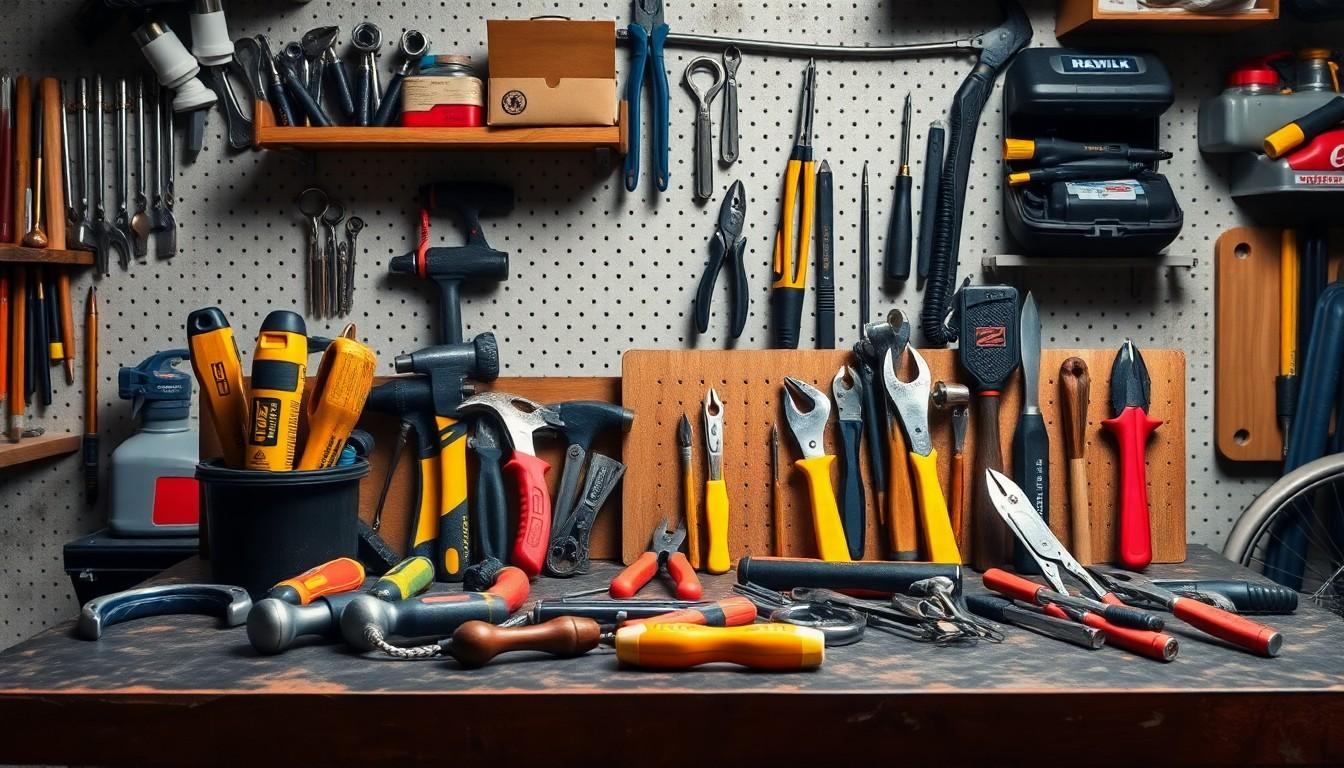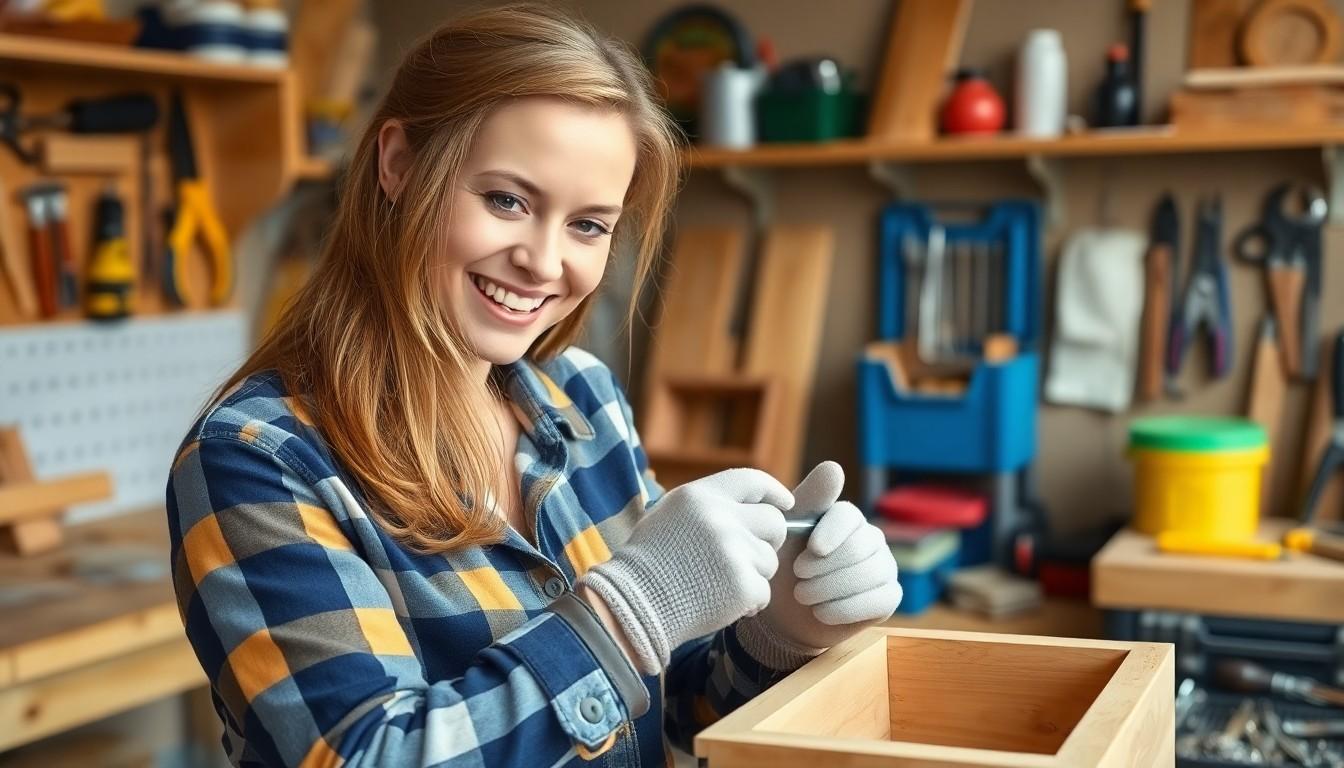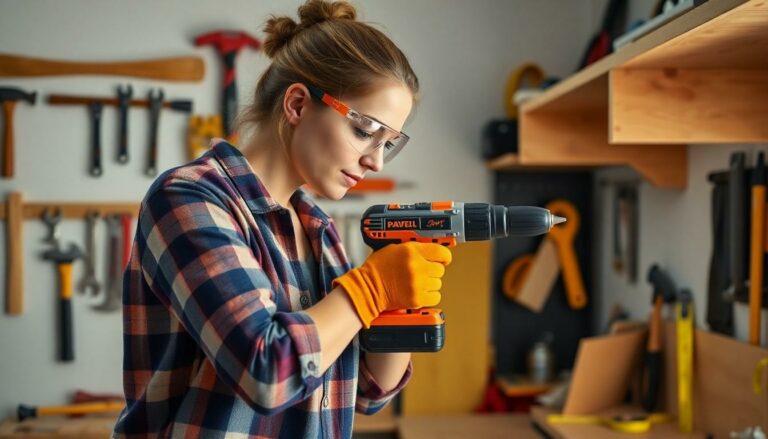Every homeowner knows that having the right tools can mean the difference between a DIY triumph and a Pinterest fail. Whether it’s fixing that leaky faucet or assembling furniture that seems to have come with an instruction manual written in ancient hieroglyphics, basic tools are the unsung heroes of home maintenance.
Imagine reaching for a screwdriver only to find a spoon instead. Not quite the right tool for the job, right? Equipping a home with essential tools not only saves time and money but also empowers anyone to tackle projects with confidence. From hammers that help you nail it every time to wrenches that make plumbing woes disappear, these basic tools are a homeowner’s best friends. Ready to build your toolkit and unleash your inner handyman? Let’s dive into the must-haves that’ll keep your home running smoothly.
Table of Contents
ToggleOverview of Basic Tools for Home
Equipping a home with essential tools enhances the ability to manage maintenance tasks effectively. Common tools include screwdrivers, pliers, and wrenches, which serve multiple purposes. A basic tool kit often features a hammer, allowing for effective fastening and repairs. Households benefit from having a level to ensure surfaces remain even during installation projects.
Additionally, a tape measure proves invaluable for accurate measurements, whether for furniture arrangements or home improvements. Safety is paramount, so including a pair of safety glasses protects eyes during various projects. A utility knife becomes essential for cutting tasks ranging from opening boxes to trimming materials.
Power tools, while not strictly basic, often enhance efficiency. Cordless drills facilitate quick drilling and driving tasks, significantly reducing manual effort. Keeping a compound miter saw nearby offers precision when cutting materials like wood for various projects.
Organizing these tools within a sturdy toolbox ensures easy access when needed. Storing frequently used tools in a designated area prevents frustration during spontaneous DIY projects. Checking inventory regularly maintains an updated collection, removing the risk of missing tools during critical tasks.
Investing in quality tools can lead to long-term savings. Well-made tools resist wear and function effectively over time. Marking a schedule for tool maintenance helps ensure that they remain in good working condition.
Maintaining a well-stocked tool kit fosters confidence for any home improvement project. Homeowners feel empowered to tackle repairs and renovations, significantly enhancing their living spaces.
Essential Hand Tools

Essential hand tools form the backbone of a reliable home toolkit. These tools enable homeowners to successfully tackle various maintenance and repair tasks.
Hammers
Hammers come in several types, including claw and sledge variations. A claw hammer, with its curved claws, removes nails with ease, while a sledgehammer handles heavy-duty tasks like breaking concrete. Weighing between 16 and 28 ounces, a standard hammer provides adequate power for most jobs. Selecting a hammer with a comfortable grip prevents fatigue during prolonged use. Properly storing hammers in a toolbox extends their lifespan and maintains safety.
Screwdrivers
Screwdrivers are indispensable for assembling furniture and tightening loose screws. Common types include flathead and Phillips, each suited for specific fasteners. The flathead screwdriver flatens out edges for slotted screws while the Phillips accommodates cross-shaped screws. Various sizes exist, ensuring compatibility with different projects. Magnetic tips on some screwdrivers simplify screw handling, making tasks efficient. Regularly inspecting and replacing worn-out screwdrivers enhances effectiveness and safety.
Pliers
Pliers serve various purposes, including gripping, twisting, and cutting wires. Types like needle-nose and slip-joint pliers cater to different applications. Needle-nose pliers excel at reaching tight spaces while slip-joint pliers adjust to various sizes. High-quality pliers feature ergonomic handles for comfort during extended use. Moreover, incorporating cutting pliers in the collection facilitates wire cutting without additional tools. Storing pliers alongside other tools prevents misplacement and ensures easy access when needed.
Power Tools for Home Use
Homeowners benefit significantly from having the right power tools. These tools enhance precision and efficiency in various projects.
Drills
Drills are essential for any home toolkit. A cordless drill offers flexibility and ease of use for different tasks. Homeowners find them invaluable for assembling furniture or drilling holes in walls. Battery-powered options provide freedom without being tethered to an outlet. Selecting a drill with adjustable speed settings caters to diverse materials and tasks. Additionally, using drill bits suited for wood or metal ensures optimal results.
Saws
Saws play a crucial role in home improvement projects. A circular saw delivers fast, straight cuts for wood or composite materials. For more intricate work, a jigsaw allows for curves and detailed cuts. Homeowners often choose miter saws for making precise angle cuts, particularly for framing or trim work. Electric saws reduce physical strain and improve cutting accuracy. For safety, utilizing blade guards is important during operation.
Sanders
Sanders smooth surfaces and prepare materials for finishing. An orbit sander excels at even sanding jobs, providing a smooth finish without leaving swirl marks. For intricate detailing, detail sanders cater to corners and tight spaces. Efficiency increases significantly when using electric sanders over manual options. Selecting the right grit sandpaper based on the material ensures optimal results. Homeowners appreciate the time saved by investing in quality sanders for their projects.
Safety Equipment
Safety equipment plays a crucial role in home projects. Ensuring proper protection minimizes the risk of injury during DIY tasks.
Goggles
Goggles protect the eyes from dust, debris, and harmful substances. Opt for goggles that fit comfortably and securely for maximum coverage. Look for options meeting ANSI safety standards for reliable protection. Utilizing goggles during tasks like sanding, cutting, or working with chemicals significantly lowers the chance of eye injuries. Make sure to keep a pair accessible in the toolbox for convenience. Regularly inspect the lenses for scratches or damage to maintain clear vision. Selecting anti-fog features enhances visibility, especially in humid conditions.
Gloves
Gloves offer hand protection against cuts, abrasions, and chemicals. Choose gloves made from durable materials, ensuring they fit properly for improved dexterity. Leather gloves work well for heavy-duty tasks like woodworking, while rubber or nitrile gloves are ideal for handling chemicals and cleaning supplies. Wearing gloves prevents blisters during extended lifting and gripping tasks. Consider having multiple pairs in various sizes to accommodate different projects. Regularly check gloves for wear and tear to maintain their protective qualities. A reliable pair of gloves enhances comfort and safety when tackling home improvements.
Organizing Your Tool Collection
Organizing tools effectively enhances accessibility and efficiency for any DIY project. Prioritizing a structured tool collection simplifies tasks and fosters a more productive environment.
Toolboxes
Toolboxes serve as the foundational storage solution for a variety of tools. Choosing a durable, portable toolbox ensures easy transportation around the home. Arranging hand tools, such as screwdrivers and pliers, in separate compartments prevents unnecessary clutter. Consider size when purchasing; larger toolkits accommodate power tools, while smaller options work for basic hand tools. Engaging in regular inventory checks keeps track of what’s available and ensures the right tools are on hand for each project.
Wall-mounted Storage
Wall-mounted storage optimally utilizes vertical space in garages or workshops. Installing pegboards provides a flexible way to hang frequently used tools within easy reach. Hooks, shelves, and bins can customize layouts based on individual needs. Additionally, visually separating categories, such as cutting tools and measuring instruments, enhances organization. Having tools visibly displayed reduces time spent searching, enabling quicker access during projects.
Equipping a home with the right tools is essential for any homeowner looking to tackle maintenance tasks effectively. Basic tools not only simplify projects but also build confidence in one’s DIY abilities. Investing in quality hand tools and power tools paves the way for successful renovations and repairs.
Safety should always be a priority. Proper safety equipment protects against potential hazards during projects. Organizing tools efficiently ensures easy access and maximizes productivity.
With a well-stocked toolkit and the right mindset, homeowners can confidently approach any task that comes their way. Embracing the DIY spirit transforms challenges into opportunities for creativity and improvement in living spaces.




